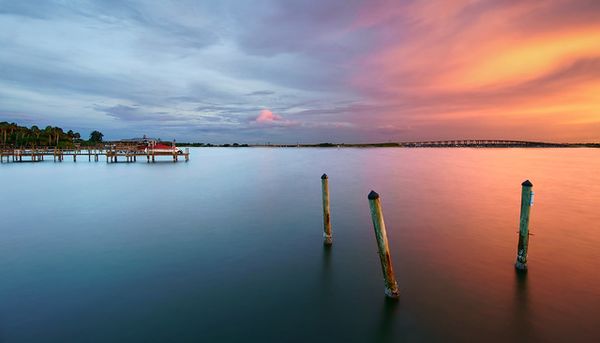Indian River: Difference between revisions
mNo edit summary |
|||
| Line 24: | Line 24: | ||
==Indian River (IR)== | ==Indian River (IR)== | ||
The '''Indian River''' is a 121 mile long | The '''Indian River''' is a 121 mile long brackish [[lagoon]] spanning 5 counties on [[:Category:Florida|Florida's East Coast]]. The Indian River is the largest of 3 water bodies in the [[Indian River Lagoon Estuary]] system and is a part of the [[Atlantic Intracoastal Waterway]]. | ||
===Location=== | ===Location=== | ||
Revision as of 05:52, October 9, 2019

Indian River (IR)
The Indian River is a 121 mile long brackish lagoon spanning 5 counties on Florida's East Coast. The Indian River is the largest of 3 water bodies in the Indian River Lagoon Estuary system and is a part of the Atlantic Intracoastal Waterway.
Location
The northern terminus of the Indian River is in Volusia County's Oak Hill, it merges with the Banana River at Dragon's Point on the southern tip of Brevard County's Merritt Island, and then the IR extends southward to meet Palm Beach County's Loxahatchee River and makes it's southern terminus at Jupiter Inlet.
Indian River Tributaries Indian River Causeways
Odor
During the hot summer months the earthen berm causeways tend to impede the flow of [[algae) and rotting seagrass which results in an odor of hydrogen sulfide in some areas along the river.